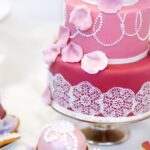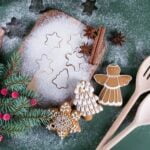Royal icing is a versatile and essential component in the world of cake decoration. Whether you are a novice baker or an experienced pastry chef, knowing how to make royal icing to decorate cakes is a skill that can elevate your creations to new heights. This sugary confection is not only used for adding intricate designs and decorations on cakes but also serves as a delicious adhesive for assembling gingerbread houses and creating edible works of art.
The history of royal icing dates back centuries, where it has been used in traditional European baking techniques. Its smooth texture and ability to harden when dried make it an ideal medium for intricate decorating work. Understanding the origins of royal icing provides insight into its significance in the culinary world and its evolution into a staple ingredient for cake decorators around the globe.
In this detailed guide, we will explore the essential ingredients needed to make royal icing from scratch and provide step-by-step instructions on achieving the perfect consistency and texture. Additionally, we will share expert tips on coloring, flavoring options, decorating techniques, troubleshooting common issues, and alternative uses for royal icing. So, if you are ready to take your cake decorating skills to the next level, let’s dive into the enchanting world of royal icing.
History of Royal Icing
Royal icing has a rich history that dates back centuries, with its origins believed to have stemmed from medieval times. Initially known as “royal” icing due to its association with royal and noble households, this versatile icing was traditionally used to decorate elaborate cakes for special occasions and celebrations. Its smooth, glossy finish and ability to hold intricate designs made it a favorite among bakers looking to create show-stopping cakes fit for royalty.
The use of royal icing in cake decoration became more widespread during the Victorian era when ornate and extravagant cakes adorned with delicate sugar flowers and intricate piping work were in vogue. These stunning creations showcased the precision and artistry that could be achieved with royal icing, solidifying its reputation as a must-have tool for skilled bakers and confectioners.
Over time, royal icing has evolved from being a symbol of opulence and luxury to a staple in the world of cake decorating. Modern bakers continue to embrace this classic icing for its versatility and timeless appeal. Whether used for creating elegant wedding cakes or whimsical birthday treats, royal icing remains an essential component in the baker’s toolkit, adding sophistication and flair to any sweet creation.
Ingredients Needed
Royal icing is a versatile and essential element in the world of cake decoration. Its smooth texture, ability to harden, and clean white finish make it a popular choice for creating beautiful designs on cakes. Making royal icing from scratch may seem intimidating at first, but with the right ingredients and techniques, you can easily master the art of royal icing decoration.
To make royal icing, you will need just a few simple ingredients that are easily accessible in most kitchens. The essential components include egg whites or meringue powder, confectioners’ sugar (also known as powdered sugar), and water. These basic ingredients form the base of royal icing and provide the perfect consistency for decorating cakes.
| Ingredient | Description |
|---|---|
| Egg Whites or Meringue Powder | Provides structure and stability to the icing. |
| Confectioners’ Sugar | Sweetens the icing while helping to achieve a smooth texture. |
| Water | Aids in thinning out the consistency of the icing for different decorating techniques. |
By having these key ingredients on hand, you can embark on your journey to mastering how to make royal icing to decorate cakes like a pro. Experiment with different ratios and techniques to achieve the perfect royal icing for your next cake decorating project.
Step-by-Step Instructions
Royal icing is a versatile and classic frosting that is commonly used to decorate cakes, cookies, and other baked goods. It has a smooth, hard finish that makes it perfect for intricate designs and decorations. Making royal icing from scratch may seem intimidating at first, but with the right ingredients and step-by-step instructions, you can easily master this essential decorating technique.
Gather Your Ingredients
To make royal icing, you will need just a few simple ingredients: egg whites or meringue powder, confectioners’ sugar (also known as powdered sugar), and water. It is important to use fresh egg whites that are free of any yolks to ensure the stability of the icing. Meringue powder is a convenient alternative to using raw egg whites and can be found in most baking supply stores.
Whip Up the Royal Icing
Begin by whisking the egg whites or meringue powder with water in a clean mixing bowl until frothy. Gradually add in the confectioners’ sugar while continuing to mix on low speed. Increase the speed to high once all the sugar has been added and continue beating until stiff peaks form. The consistency of royal icing is crucial for different decorating techniques – for outlining, a thicker consistency is needed, while flooding requires a thinner consistency.
Store Properly
Royal icing dries quickly, so it is essential to cover any unused portions with plastic wrap or a damp towel to prevent it from drying out. You can also store royal icing in an airtight container in the refrigerator for up to one week. When you are ready to use it, simply bring it back to room temperature and re-whip before decorating your cakes or cookies.
By following these step-by-step instructions on how to make royal icing from scratch, you’ll be able to create stunning decorations for your baked goods with ease. Experiment with different consistencies and colors to unleash your creativity and take your cake decorating skills to the next level.
Tips and Tricks
Royal icing is a versatile and essential component in cake decorating, known for its smooth finish and ability to hold intricate designs. Achieving the perfect consistency and texture of royal icing is crucial for creating stunning decorations on cakes. Here are some expert tips to help you master the art of making royal icing from scratch.
One key tip is to carefully control the amount of water added to the icing. Gradually add small amounts of water while mixing until you reach your desired consistency. Remember, it’s easier to thin out royal icing than it is to thicken it, so start with less water and add more as needed. To test the consistency, run a knife or spatula through the icing – it should take around 10 seconds for the line to disappear completely.
Another important tip is to make sure your mixing bowl and utensils are grease-free before starting. Any traces of grease can prevent the royal icing from reaching the right consistency and cause problems with its texture.
Make sure to use clean, dry equipment when working with royal icing to ensure the best results. Additionally, if you accidentally add too much water and your royal icing becomes too thin, you can always thicken it by adding more sifted powdered sugar until you reach the desired consistency.
For those looking to achieve a glossy finish on their decorations, adding a small amount of light corn syrup or glycerin can help improve the sheen of royal icing. This trick is especially useful when working on projects that require a shiny or polished look.
Experimenting with different additives and ratios can help you customize your royal icing based on the specific needs of your cake decorating project. By following these expert tips, you’ll be well on your way to mastering how to make royal icing to decorate cakes like a pro.
Coloring and Flavoring Options
When it comes to decorating cakes with royal icing, the possibilities are endless when it comes to adding color and flavor. While traditional royal icing is white and has a sweet taste, you can easily customize it to suit your preferences or match the theme of your cake. Adding color and flavor to royal icing not only enhances the visual appeal of your cake but also adds an extra layer of deliciousness.
Coloring Options
There are several ways you can color royal icing to achieve vibrant hues for your cake decorations. One popular method is using gel food coloring, which provides intense colors without altering the consistency of the icing.
Simply add a small amount of gel food coloring to your royal icing and mix well until the desired shade is achieved. You can also experiment with natural food dyes made from ingredients like beetroot powder, spirulina, or turmeric for a more wholesome approach to coloring your icing.
Flavoring Options
In addition to adding color, you can also infuse royal icing with various flavors to complement your cake. Common flavorings include vanilla extract, almond extract, lemon zest, or even coffee extract for a unique twist. Simply add a few drops of your preferred flavoring agent to the royal icing while mixing until evenly incorporated. Keep in mind that some flavors may affect the consistency of the icing, so adjust the amount accordingly to maintain the right texture for decorating.
Mixing Techniques
To ensure that the color and flavor are evenly distributed throughout the royal icing, it’s important to use proper mixing techniques. Start by adding small amounts of coloring or flavoring at a time and mix thoroughly before adding more.
Avoid overmixing as it can lead to air bubbles in the icing, which may affect its smooth finish when decorating cakes. Take your time and experiment with different combinations of colors and flavors to create truly unique and delicious royal icing decorations for your next cake project.
Decorating Techniques
Royal icing is a versatile decorating medium that allows for intricate designs and beautiful finishes on cakes. One of the most popular techniques for using royal icing in cake decoration is piping. Piping involves using a piping bag with a small tip to create delicate designs, borders, and lettering on the cake. To achieve clean lines and precise details, it’s essential to practice steady hand movements and maintain consistent pressure on the piping bag.
Another common decorating technique using royal icing is flooding. Flooding involves filling in larger areas of the cake with thinned royal icing to create a smooth, glossy finish.
This technique is perfect for creating colorful backgrounds or covering an entire cake with a smooth layer of icing. To flood a section of the cake, simply outline the area with thicker royal icing using piping technique, then fill in the space with thinned royal icing and use a toothpick or skewer to spread it evenly.
When working with royal icing for decorating cakes, it’s crucial to pay attention to the consistency of the icing to achieve desired results. For piping designs, the royal icing should be stiff enough to hold its shape when piped but not too thick that it’s difficult to squeeze through the piping bag.
On the other hand, for flooding technique, the royal icing needs to be thin enough to spread smoothly but not so runny that it loses its structure. Experimenting with different consistencies and practicing different decorating techniques will help you master the art of using royal icing in cake decoration.
Troubleshooting Common Issues
When making royal icing to decorate cakes, it is common to encounter various issues that may affect the texture, consistency, or overall look of the icing. One common problem that many bakers face is the icing being too runny or thin. This can occur if too much liquid is added to the icing mixture.
To fix this issue, you can gradually add more powdered sugar until the desired consistency is reached. Alternatively, letting the icing sit uncovered for a few hours can also help thicken it up.
On the other hand, if your royal icing turns out too thick and difficult to work with, you can try adding a small amount of water or egg whites to thin it out. It is important to make these adjustments slowly and incrementally to avoid over-thinning the icing. Consistency plays a crucial role in achieving crisp lines and intricate designs when decorating cakes with royal icing.
Another common problem when working with royal icing is air bubbles forming in the mixture. These air bubbles can create uneven textures on your decorated cakes. To prevent this issue, gently stir the icing using a spatula instead of whisking vigorously.
Additionally, tapping the bowl on the countertop and letting the mixed icing sit for a few minutes before using it can help reduce air bubbles. If air bubbles still appear while decorating, gently popping them with a toothpick can help maintain a smooth finish on your cake.
By understanding these common issues and knowing how to troubleshoot them effectively, you can ensure that your royal icing decorations turn out beautiful and professional-looking every time. Experimenting with different techniques and practicing patience will ultimately lead to mastery in using royal icing for cake decoration. So don’t be discouraged by challenges along the way; embrace them as opportunities to learn and improve your skills in creating stunning cake designs with royal icing.
Alternative Uses
Royal icing is not only a versatile and essential component for cake decoration, but it can also be used in various creative ways beyond just adorning cakes. Here are some innovative and fun ways to use royal icing:
- Cookie Decorating: One popular alternative use for royal icing is for decorating cookies. By using different piping techniques and colors, you can create intricate designs on sugar cookies, gingerbread cookies, or any other type of cookie you desire.
- Cupcake Toppers: Elevate your cupcakes by using royal icing to make decorative toppers. You can pipe flowers, swirls, or even miniature designs onto parchment paper and let them dry before placing them on top of your cupcakes.
- Edible Art: Get creative by using royal icing to create edible art pieces. You can pipe designs onto acetate sheets and let them dry before carefully transferring them onto cakes or other desserts for a stunning effect.
Beyond traditional cake decoration, royal icing can also be used for more unconventional purposes. Consider experimenting with these ideas to take your baking skills to the next level and impress your friends and family with your creativity.
- Custom Party Decor: Use royal icing to create custom decorations for themed parties or special occasions. From edible place cards to personalized cupcake wrappers, the possibilities are endless.
- 3D Sculptures: Take royal icing sculpting to a whole new level by creating 3D sculptures that can stand alone as centerpiece decorations. With practice and patience, you can mold intricate shapes and figures out of royal icing.
- Gift Packaging: Add a personal touch to gift packaging by using royal icing to decorate homemade treats like candies or truffles. Pipe delicate designs onto clear cellophane bags or boxes for a unique and thoughtful presentation.
As you explore these alternative uses for royal icing, remember that practice makes perfect. Don’t be afraid to experiment with different techniques and styles to discover what works best for you. With a dash of creativity and a dollop of royal icing, the possibilities are truly endless when it comes to edible artistry.
Conclusion
In conclusion, royal icing is a versatile and essential tool in the world of cake decoration. From its traditional uses to modern techniques, this age-old recipe has stood the test of time and continues to captivate bakers and decorators alike. By following the simple steps outlined in this article on how to make royal icing to decorate cakes, anyone can elevate their baked creations with intricate designs and beautiful detailing.
Remember, the key to achieving the perfect royal icing lies in the ingredients, technique, and consistency. By using a good quality egg whites or meringue powder, slowly incorporating confectioners’ sugar, and mastering the art of piping and flooding, you can create stunning decorations that will impress your family and friends. Don’t be afraid to experiment with colors and flavors to customize your royal icing for different occasions.
So why not take a leap of faith and try making your own royal icing for your next cake decorating project? Whether you’re a beginner or an experienced baker, there’s always something new to learn in the world of baking. With practice and patience, you too can master the art of royal icing decoration and add a touch of magic to your cakes. So go ahead, unleash your creativity, and let your imagination run wild with royal icing.
Frequently Asked Questions
How to Make Royal Icing Decorations for Cake?
Making royal icing decorations for a cake involves preparing royal icing with the right consistency, transferring it to piping bags fitted with tips, and then piping your desired shapes onto parchment paper. Allow the decorations to dry completely before placing them on the cake.
Can I Put Royal Icing Directly on a Cake?
It is generally safe to put royal icing directly onto a cake, but it is essential to make sure the icing has dried completely before doing so. This will prevent the icing from running or smudging on the cake surface once applied.
How Do You Harden Royal Icing on a Cake?
To harden royal icing on a cake, you need to give it adequate time to dry and set properly. This can be achieved by allowing the decorated cake to sit at room temperature in a dry environment for several hours or overnight. If necessary, you can also use a fan to speed up the drying process.

Welcome to my blog about home and family. This blog is a place where I will share my thoughts, ideas, and experiences related to these important topics. I am a stay-at-home mom with two young children. I hope you enjoy reading it! and may find some helpful tips and ideas that will make your home and family life even better!





